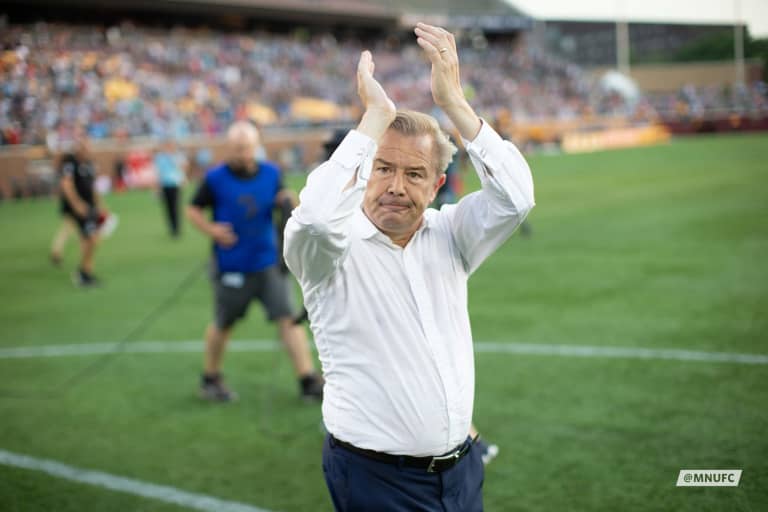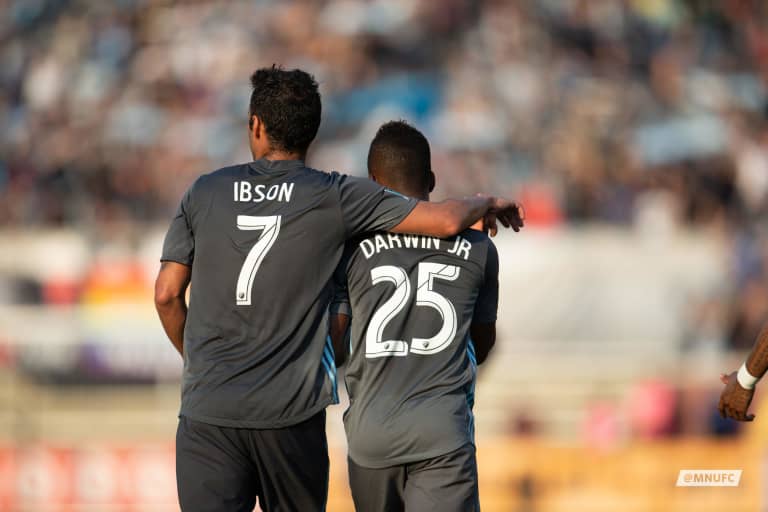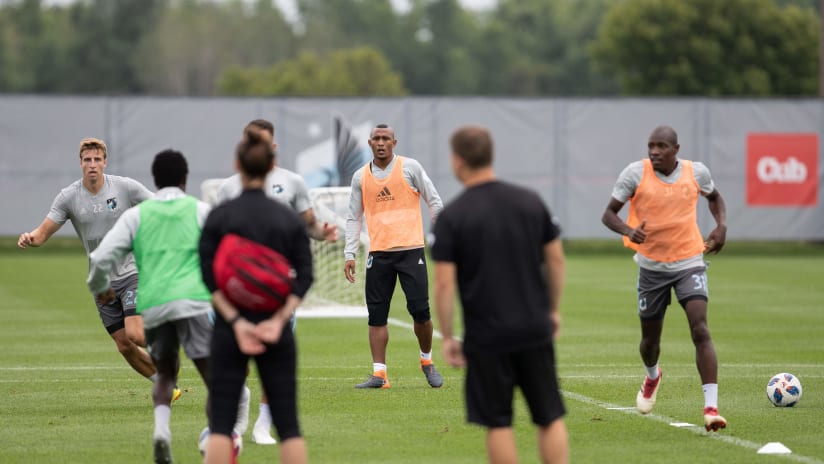While the plot of a book might take chapters to unfold, Minnesota United has to write a new story every week in training. Each week is its own chapter with its own arc, made up of exposition, rising action, climax, falling action and resolution.
The structure of the Loons’ week-to-week schedule remains fairly consistent, certain major elements of the first team’s game preparation — the opponent or whether the team is at home or on the road — are ever-changing.
The team rarely completely changes its formation from the previous week, but minor tactical changes and strategical improvements are worked on consistently. Each week, a new challenge lies at the end of the chapter.
“I think the week is split in half,” said Assistant Coach Mark Watson. “We’ll play the game on the weekend. The first couple of days will be light training, or training for the guys that didn’t play. And then the last couple of days is focused on the next opponent. The week kind of builds up.”
Here’s how a typical week breaks down when MNUFC plays a game on Saturday then starts to get ready for another game on Saturday the next week.
Exposition: Sunday and Monday / Regeneration and Recovery
The chapter begins with an action: Move.
“The last thing somebody wants to do the next day after a game when they’re sore and tired is get on a bike, but it can be really helpful to start the recovery cycle,” said Head Athletic Trainer Stacey Hardin. “So moving is definitely one of them. Sleeping. And then just proper nutrition to start again."
Sunday acts as a rest day. When the team is on the road, Sunday is a travel day back to the Twin Cities. Players are encouraged to move on their own, hydrate and lie low in hopes of getting some rest in as they begin to recover from the past weekend’s game.
When the players wake up on Monday morning, it’s time to get out of bed and head to the training facility in Blaine.
As the players arrive at the training facility, they are briefed and gear up for a split-session. The team is divided into groups based on how many minutes they put into the game over the weekend. Those that put in a shift of 60 minutes or more will do a very short regeneration session. The guys that didn’t get as many minutes will train with a proper workout, getting half of a game’s worth of loading to start the week.
Rising Action: Tuesday / Re-Introduction
The week’s plot begins to unfurl in earnest with re-introduction. Tuesday is the first day the team is all together again, and at this point in the chapter, there is a quick nod to the previous one.
Tuesday places an emphasis on improving something the team didn’t do well on the weekend through small-sided drills geared towards reactive power. It’s very short. It’s very sharp. It’s paired with a heavy full-body lift in the weight room following the work on the field.
“We feel pretty strongly about what we do, and improving what we do, and having a real focus on ourselves and a good performance,” said Assistant Coach Mark Watson.
Climax: Wednesday and Thursday / The Opponent
At the midpoint of the week, a new set of characters are introduced: the week’s opponent.
The opponent is the sole focus for the second half of the week. Wednesday and Thursday consist of the hardest training sessions of the week, focusing on the opponent and game ahead as a whole.
Wednesday is focused on endurance, beginning with an extended, continuous warm-up. In contrast to the short, sharp movements of Tuesday, the movements are more linear and the spaces of playing become bigger. The pace of play intensifies alongside the increased distance covered, which amounts to seven miles of total running.
Thursday is geared towards speed with a tactical concentration. From a physical standpoint, the goal is for the guys to operate very quickly in what they’re doing on the field. The work consists of longer resting intervals, and working intervals completed at higher velocities.
“If no one has sprinted, we want them to sprint that day,” said Jarryd Phillips, Head of Fitness and Sports Science. “If they haven’t sprinted within their shape, we want them to sprint. So, it’s basically as hard and as fast as you can, for a very short duration. It’s got more of a tactical focus.”
In the weight room, the workouts on Wednesday and Thursday push the players to their maximums as well. Once their bodies are recovered properly from the weekend, the work is put in midweek to prepare for the coming game.
“We’ll tend to do our full-body lifts and our heavier-type lifts when we’re four and three days out,” said Phillips.
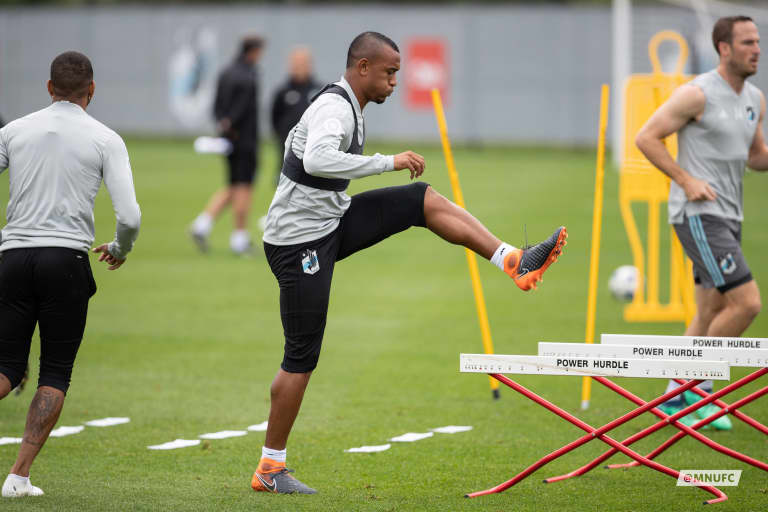
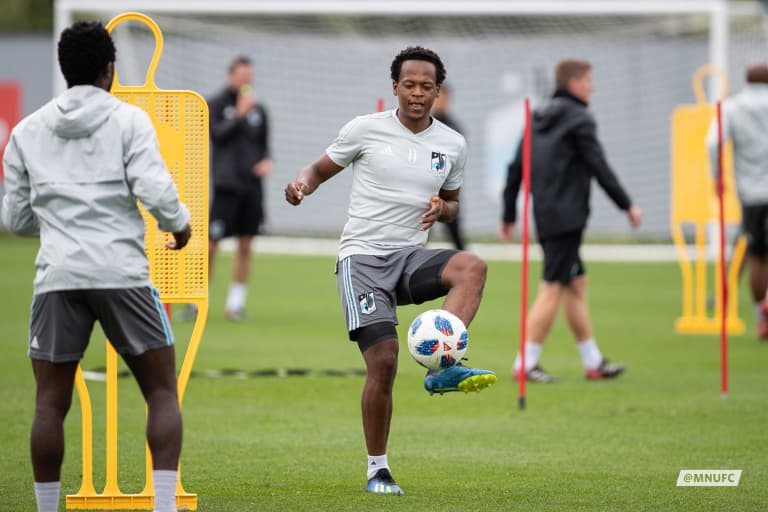
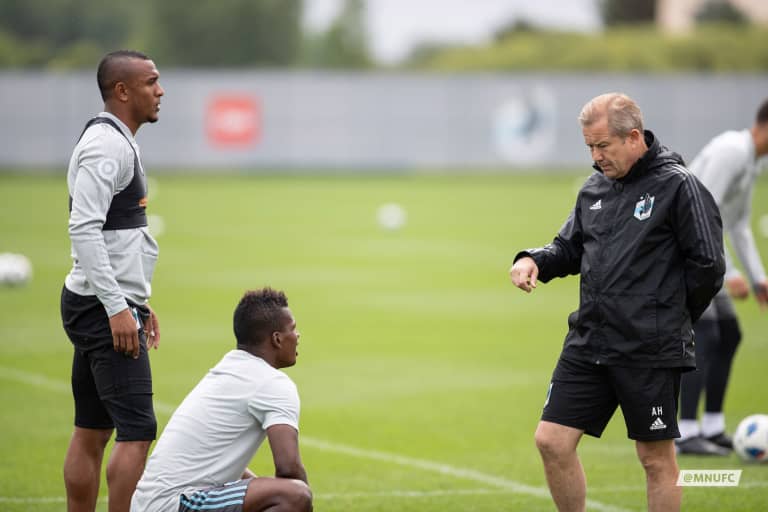
Falling Action: Friday / Final Preparation
“The day before a game, it is basically as low as you can go for the starters,” said Phillips. “There’s not a lot of cognitive loading, there’s not a lot of physical loading for them. Adrian [Heath] is just going over shape for them.”
The final 48 hours before a game is where the page flips fully from recovery and rebuilding to preparation. The week leading up to the final two days was comprised of four different types of training sessions, each focused on a specific aspect of the game. The lift that followed each session was strongly correlated to the tactical work done on each of those days.
“As soon as we start to get within that 48 hours, the shift will become core and upper body for the guys who are playing,” said Phillips. “And those are always optional depending on how the guys react to the different lifts.”
For the non-starters, they play a small-sided game and incorporate an upper body lift and some type of physical work to ensure they’re keeping pace with the starters.
Resolution: Saturday / Game Day
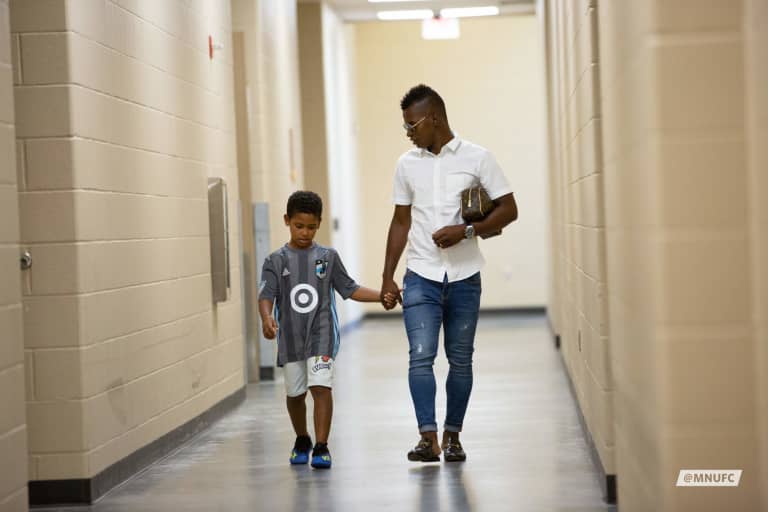
Saturday means lacing up the boots and stepping onto a field different than the one at the National Sports Center. Everything that has occurred throughout the week — the reflection, realization and preparation — leads up to this moment.
The players not in the 18 will train before the game, accumulating another half of a game worth of running. Between the session this group had at the beginning of the week and this workout on Saturday, they will have worked up to a full game’s worth of loading throughout the week.
The pitch is cleared and the page turns again. The team walks out of the tunnel and onto the field with Adrian Heath’s final words in their heads.
Game time.
The players channel the more than 15 hours of training and preparation done throughout the week into the next 90 minutes on the field.
The hours spent watching film and studying the opponent. The hours spent tweaking formations and honing their strategy. The hours spent conditioning and in the weight room preparing physically. The hours spent eating right and getting their minds focused on the task at hand.
Everything that comes out of the hours of preparation influences what happens on Saturday, but then even that has to be put behind them.
“I will say this,” said Watson. “Once the game is over on Saturday, we spend a day or two looking at our performance, and then we’re completely on to the next opponent.”
